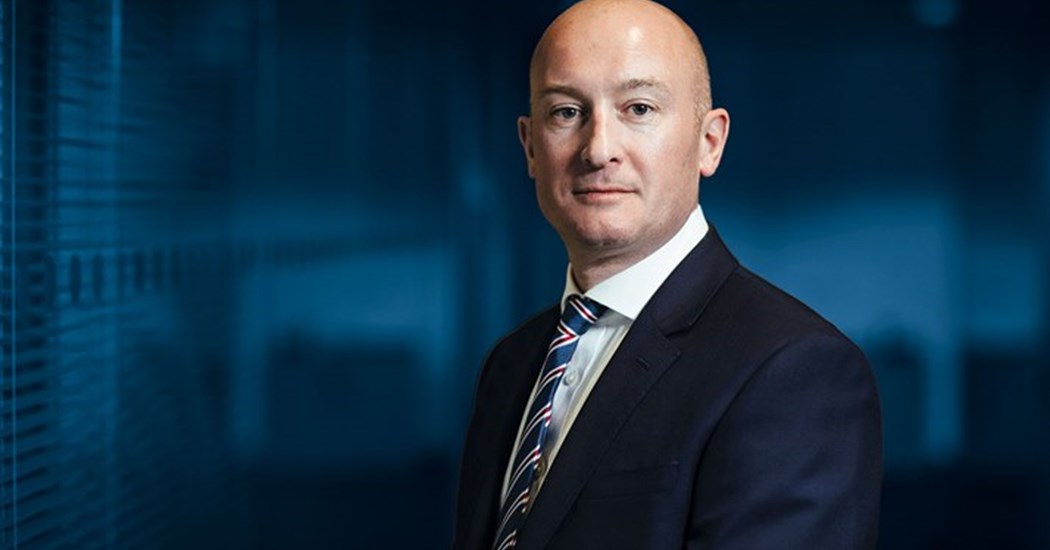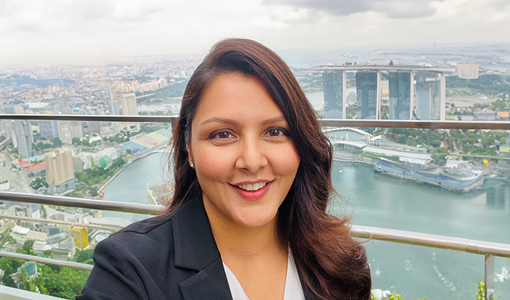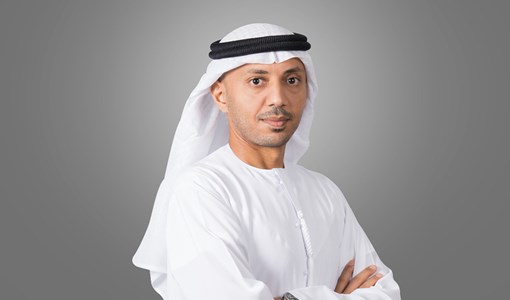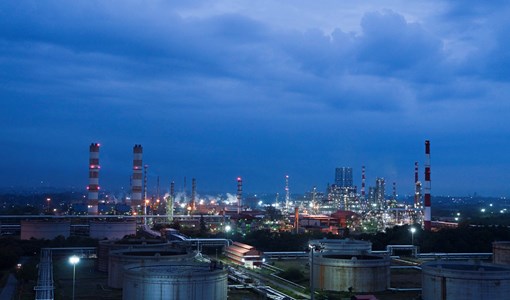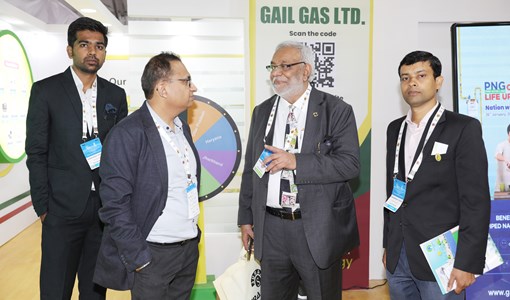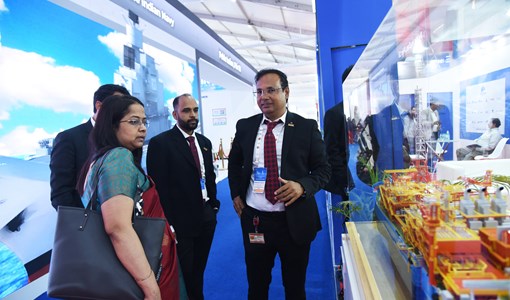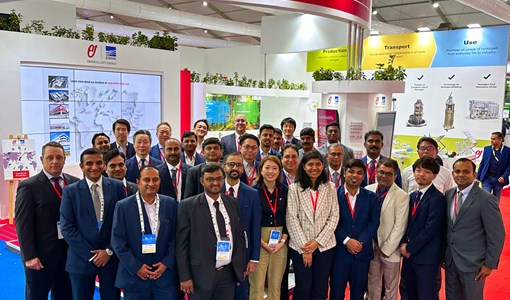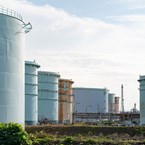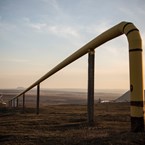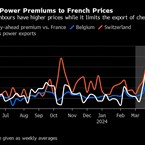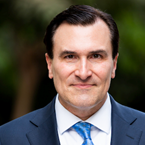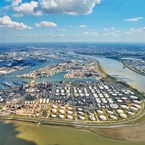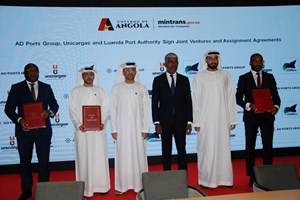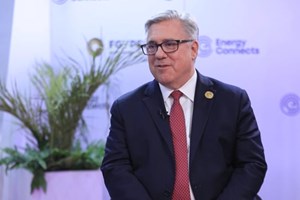New direction for Proserv Controls
Davis Larssen, the newly appointed CEO of Proserv Controls and Michael Purkiss VP, Services talk exclusively about the strategic direction the company will be taking after the recent restructuring. Plus we learn more about the service offering in the UAE that the firm hopes can be a blueprint to launch in other regions.
The origins of Proserv go back roughly 50 years as a controls company but 2019 proved to be quite a seminal year for the company. After over a year of restructuring, a new streamlined business emerged in October last year. Proserv has now evolved into two global divisions – Gilmore, a Proserv Company and Proserv Controls.
Davis Larssen who has been at Proserv for nearly a decade played a key role in coming up with the new strategy after the restructuring started in 2018.
“We did restructuring and re-capitalisation of the business in May 2018. Then in 2019 I was challenged by the new board to conduct an in-depth strategic review of the whole Proserv Group at the time. I presented this updated strategy in March of this year and as part of the execution of this strategy, we sold off some divisions we deemed to be non-core and essentially went through a re-structuring exercise to turn ourselves into the two clear, almost standalone divisions” Larssen said.
Gilmore is headquartered in Houston and Proserv Controls is headquartered in Aberdeen. Larssen became the CEO for the Proserv Controls in October last year, after having been the CFO for 5 years and then 3 years as COO.
“Proserv Controls is a globally diverse company with a clear controls and technology focus. We have over 700 employees, with a sizeable presence in the Middle East, in particular,” said Larssen.
He added: “We want to be seen as defining and leading the controls technology market. Ultimately this involves helping our customers improve the reliability, the integrity and productivity of their critical infrastructure whether that is topside control systems or subsea control systems.”
Controls focused
Larssen made it clear that Proserv Controls will be very much a focused controls technology company in the global arena.
“We currently serve most of the major operators and national oil companies around the world. We are very heavily involved in subsea and topside controls and we have unique offering for brownfield and tiebacks,” Larssen said.
He added: “We have a huge installed base in different parts of the world but we also have a huge knowledge base around the wider controls technology space. Our sweet spot is around brownfields and upgrades to fields. We are not about chasing after the big greenfield opportunities. We are all about improving productivity of existing infrastructure. We feel this is much more economical for the operator and for the environment.”
Unique offering
An area that Proserv Controls really excels in, according to Larssen, is offering assurances that its equipment and services will never become obsolete and will remain active throughout the whole life of an asset.
“One of the key aspects of our offerings is that we guarantee that our subsea control systems will never become obsolete. This is a major difference compared to other offerings in the market. Our ability to communicate subsea is also enhanced. We can do a retrofit on a structure and install broadband style communication. This allows us to extract information and data on what is happening in the subsea arena and let the operator make a better and more informed decision to improve productivity.”
For Larssen, the subsea side is also about the adaptability of the company’s offering and the commitment that its technology can coexist with any original equipment manufacturer’s installed subsea system, again enhancing production and value of an asset.
“It has been designed that way and through this promise we can become the life of field controls partner. We understand that our customers expect us to work for the full life of the field.”
On the topside side of the business, Larssen explained that the company works on a global basis but its origins for this side of the business started in the Middle East.
Aligned with its topside business Proserv offers service capabilities where they partner with customers to become their life partner for the controls.
“This life of field partner on the topside of the business is a key area for us. This is critical infrastructure and our controls ensure platforms and towers are adequately maintained in the event of an emergency shutdown. Topside controls also let you make productivity decisions in terms of improving the performance and reliability.”
This is what Michael Purkiss, VP, Services, has been focusing on over the last few years in Abu Dhabi to push this services angle.
As Larssen explained: “The service model that Purkiss has been leading in Abu Dhabi over the last 3-4 years is leading edge and as part of it we have implemented a software solution that we call AEGIS. This really allows an operator to remain vigilant around their maintenance needs and we become a partner in this. Essentially, we go offshore and we maintain the controls on the infrastructure on their behalf to ensure their productivity is maintained.”
AEGIS is a real focus for Proserv. The software name stands for Asset Enhancement Global Intelligence Solution. Larssen sees it as a major technical solution that sees Proserv using leading edge controls technology to improve topside infrastructure.
As Proserv Controls’ global footprint extends, Larssen sees engineering service support as a critical component moving forwards.
“In the last two to three years, we opened an engineering centre in Chennai, India that we anticipate will go through significant growth in the next 18 months. This centre supports the engineering back office for the whole global business. We have around 40 people there now and we expect this to grow to 60 in the next 12-18 months.”
Larssen also touched briefly on the firm’s sampling business which allows Proserv to go in and take live samples of what has been produced from a well and do a measurement from that and allow customers to make a better and more informed decision. They can then decide on what to do with that well.
Abu Dhabi leads the way
Larssen said that: “The Middle East is seen as a key region and we are opening up a new facility in Abu Dhabi in Q1 this year. The Abu Dhabi model has to be the blue print for everywhere else.”
Purkiss talked a bit more in-depth about the service offering the company has been working on in the UAE.
“Our goal for the Middle East is to add value for the operator, so this is what we are doing with ADNOC and are looking to do for Saudi Aramco. We have been working with the ADNOC Group on their topside assets and we really want to be a life partner. It is not just a token gesture and we have seen our relationship grow and we want to replicate this model in other markets.”
He added: “We feel this offering is very timely for the Middle East now as only a few years ago, everything was greenfield. Work was all about new fields and infrastructure. We feel that the landscape has changed and we are positioned well to step in. The key part of the strategy is that we can apply simple operation solutions to brownfields onshore or offshore.”
Purkiss believes that globally Proserv can bring the skills they have honed in the Middle East in terms of service offering.
“We have made sure we work in conjunction with ADNOC and Aramco and really understand what they want and what we can help with. Technology is a major part of it but also there is our agility and innovation in operation, driven by proper planning and preparation .”
Market conditions
The current energy landscape actually works for Proserv’s new laser focused strategy.
“Ultimately reducing downtime and improving the productivity and performance, whether it is subsea or topside, is a main driver for the industry,” said Larssen
He added: “The last 3-5 years have been very tough and we have seen an increase in demand to reduce CAPEX significantly. Operators focus is now on operational expenditure and improved reliability. We have seen a huge impact in terms of our ability to reduce CAPEX and obviously operators are delighted that we can do this and partner with them to improve production for minimal implemental cost.”
Technology lead
Proserv can bring new technologies into ageing infrastructure to extend the life of the field and improve productivity. Technology is a core part of Proserv’s new direction and strategy.
“We already had a technology centre in Trondheim in Norway and as part of the restructuring we have put in place a chief technology officer, Tore Erntsen. He now leads our global technology portfolio across all of Proserv Controls,” noted Larssen.
“As part of this new direction we put in place a technology roadmap laying out over the next five years the direction we want to go in terms of technology. This is part of our long term strategic review and takes each part of the business and sees where we are today and what our competitor advantage is and how we can maintain this advantage in the future,” he added.
What Proserv has done is involve customers in the technology conversations and they have worked with 5-8 customers to help form a strategy.
“We have also put in place technical authorities, which are technical experts in the various domains within Proserv who sit around the world and are all linked back to this new CTO function we have created to ensure we have a global view.”
One positive result of bringing customers into the process is Proserv taking an active role in the renewable sector.
“What has been really beneficial for us that has come out of this process is that some of our customers have really started pulling us into the renewable markets, particularly offshore wind. Where we can take existing controls, products and services and essentially deploy them into the growing offshore wind environment,” said Larssen.
He stated: “We see huge gains for us going forward in the renewable space which is very different to oil and gas with its own set of drivers. As it is a very new industry we have found a real willingness to embrace new technologies and new ways of doing things.”
Digitalisation push
In addition to the new technology drive, Proserv is taking digitalisation very seriously.
“We just created a new digital role at Proserv in December when Stuart Harvey was appointed as Digital Innovation Manager and he will sit under Tore at Trondheim,” revealed Larssen.
“We are increasingly having conversations with customers around data analytics, machine learning and digital twins. We are already on that path in some respects with the way our control systems work as our underlying software is open source.”
Larssen added: “What we have challenged Stuart with is to map out the strategy from a digital innovation perspective, including advancing the development of our AEGIS solution. Stuart will work with Purkiss and other key technology players in our business today to put that whole platform in place so we can then become a true ‘life of’ partner.”
Outlook
Larssen ended on a very positive note, excited for the future.
“We just had a board meeting at the end of last year and we are looking at roughly 15-20 per cent year-on-year revenue growth in 2020 versus 2019. Despite all the restructuring we went through in 2019 and selling off some business units, we still grew about 16 per cent in 2019 over 2018. We are getting the full support of our investors and I am very excited about what 2020 holds for us globally and in the Middle East in particularly. I think we have an opportunity to replicate what we are currently doing in the UAE market with ADNOC in other specific target markets throughout the world.”
KEEPING THE ENERGY INDUSTRY CONNECTED
Subscribe to our newsletter and get the best of Energy Connects directly to your inbox each week.
By subscribing, you agree to the processing of your personal data by dmg events as described in the Privacy Policy.

Energy Workforce helps bridge the gender gap in the industry
Mar 08, 2024
EGYPES Climatech champion on a mission to combat climate change
Mar 04, 2024
Fertiglobe’s sustainability journey
Feb 29, 2024
P&O Maritime Logistics pushing for greater decarbonisation
Feb 27, 2024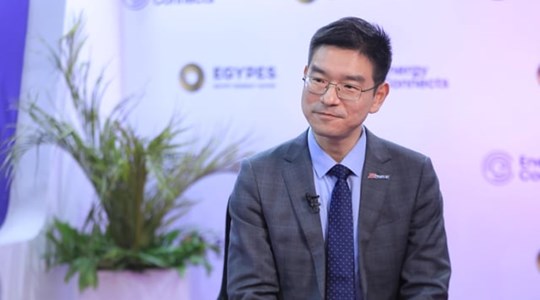
Neway sees strong growth in Africa
Feb 27, 2024
India’s energy sector presents lucrative opportunities for global companies
Jan 31, 2024
Oil India charts the course to ambitious energy growth
Jan 25, 2024
Maritime sector is stepping up to the challenges of decarbonisation
Jan 08, 2024
COP28: turning transition challenges into clean energy opportunities
Dec 08, 2023
Why 2030 is a pivotal year in the race to net zero
Oct 26, 2023Partner content

Ebara Elliott Energy offers a range of products for a sustainable energy economy

Essar outlines how its CBM contribution is bolstering for India’s energy landscape

Positioning petrochemicals market in the emerging circular economy

Navigating markets and creating significant regional opportunities with Spectrum


